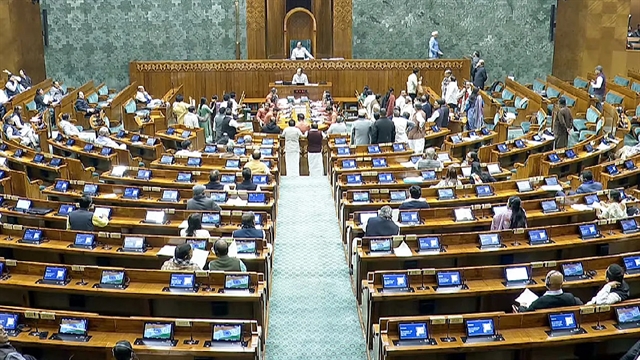.jpg) Society
Society

As Việt Nam has launched a mass inoculation campaign in all 63 cities and provinces lasting from July this year until April next year, Vietnamese nationals and foreigners can make online registration for COVID-19 vaccines.

|
| A military officer who is a member of the pandemic prevention and control force receives a vaccine shot in the northern province of Cao Bằng. — VNA/VNS Photo Minh Quyết |
HÀ NỘI — Vietnamese nationals and foreigners can now register online for COVID-19 vaccines, according to Nguyễn Trường Nam, Deputy Head of the Information Technology Department of the Ministry of Health.
The ministry has confirmed that anyone over the age 18 can choose one of two ways to register for their vaccination online.
“The entire process, from registering for online vaccination to looking up vaccination history and results, can be done on the E-health app. The healthcare sector can monitor quantities of people who registered for vaccination, have received vaccine shots or remain unvaccinated, and the number of vaccines delivered to the venues,” Nam said.
He said with the online system, people do not have to visit vaccination venues to register. Information is sent to authorities quickly and they can avoid lost or duplicate information.
However, it does not mean who registered first will get priority.
The system would not prioritise early registration, he said.
People must provide information on which priority groups they are in. Based on that information, authorities will arrange vaccination schedules for each group, Nam told Vietnam News Agency.
Option One: Directly via the COVID-19 vaccination portal: https://tiemchungcovid19.gov.vn/portal/register-person
Option Two: Via the E-health app for phones using Android and iOS that can be downloaded here: https://hssk.kcb.vn/#/sskdt.
To use the app users must register with a phone number. After verifying their information, users will receive instructions for registering for their vaccination.
Data collected will be transferred to vaccination venues. The venues will screen registrants, confirm their information, and make a list of people to prioritise. Once registered, users will be notified as vaccines become available. They will be given an appointment for screening and will be informed about their vaccination schedule.
The website and the E-health app are expected to be updated with an English version in the next few weeks. Foreigners will be able to access these systems to make registration once the English version is completed.
Each user will have a black and white QR code on their e-health record app. When people have received the first vaccine jab, the QR code colour will turn yellow.
When the second jab has been received, the colour will turn green.
The QR code will replace paper vaccine certificates that people were granted earlier. The system is currently updating the data of those who have already been vaccinated so it may take a while for those who have previously been vaccinated to receive their online certificates.
The online vaccination database consists of the number of shots and the type of vaccine that people have received. They can also use the QR code on the app to prove their vaccination status when travelling within Việt Nam and through checkpoints.
The QR code will serve as a basis to create a vaccine passport in the future.
Military-run telecommunications company, Viettel, the service provider, plans to improve its server capacity to minimise network congestion for online registrations.
Việt Nam looks to have about 70 per cent of the population inoculated to achieve herd immunity by late 2021 or early 2022. It targets that at least 50 per cent of people aged 18 and above will be vaccinated against COVID-19 in 2021, and more than 70 per cent of the population will get the shots by the end of the first quarter next year. Việt Nam looks to have about 70 per cent of the population inoculated by late 2021 or early 2022. It is targeting at least 50 per cent of people aged 18 and above in 2021 and more than 70 per cent of the population to have shots by the end of the first quarter of next year. There are sixteen priority groups. 1. Healthcare workers 2. Those involved in pandemic prevention. For example, members of steering committees, those working at quarantine areas, or experts conducting epidemiological investigations. 3. Military officers 4. Police officers 5. Diplomatic officers 6. Teachers 7. Students 8. Custom, immigration officers 9. Essential service providers in aviation, transport, tourism, electricity, and water 10. People with chronic illnesses 11. People aged over 65 12. Residents in pandemic-hit areas 13. People on low-income, including pensioners, food sellers, market traders, builders, and informal workers 14. People who are sent by State agencies to work and study abroad 15. Religious dignitaries 16. Other groups decided by the health minister or chairpersons of provincial-level People’s Committees or proposed by vaccine suppliers There are four types of localities being prioritised for vaccination.
|

.jpg)


